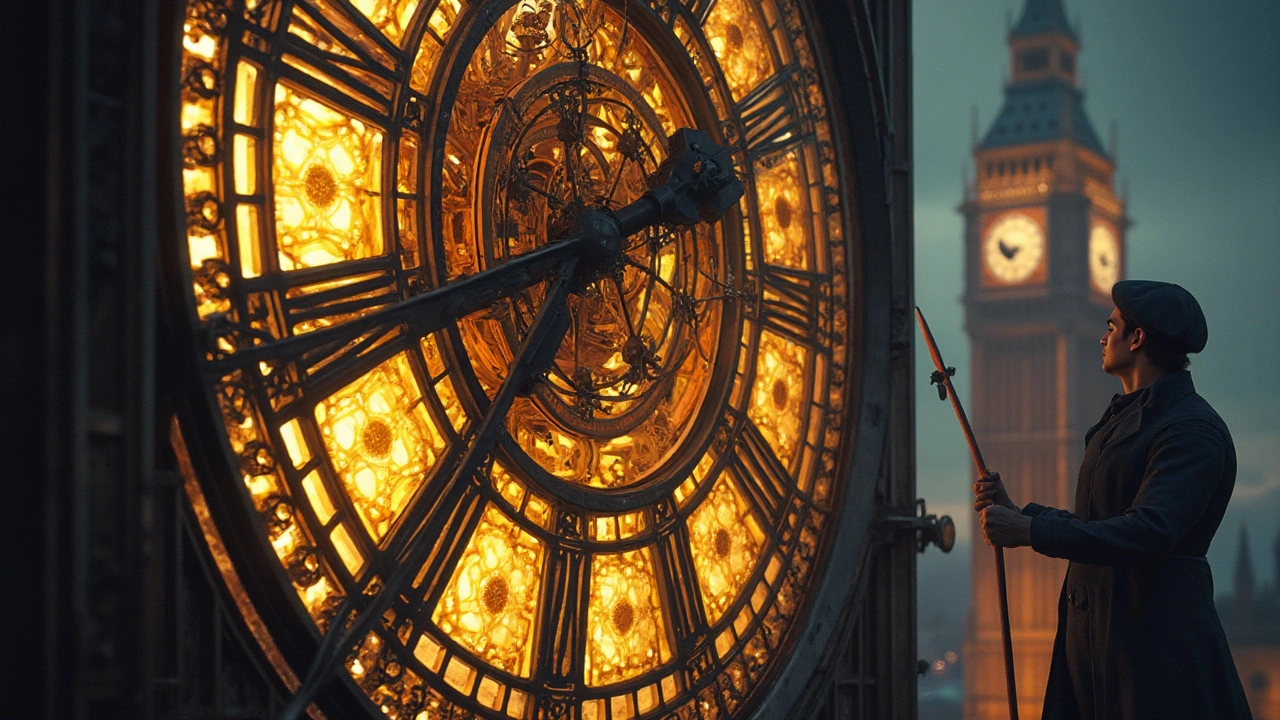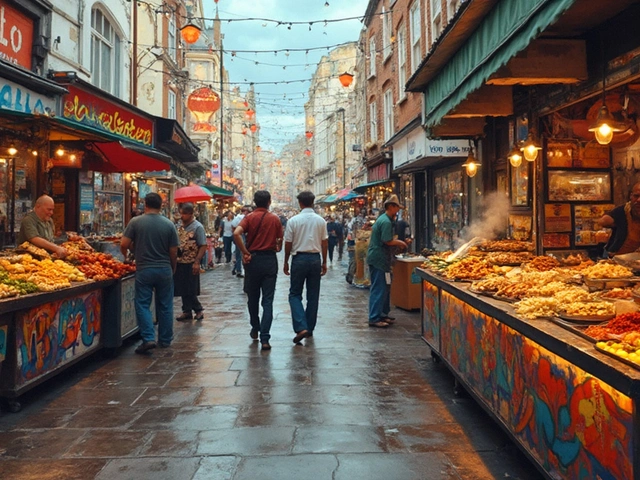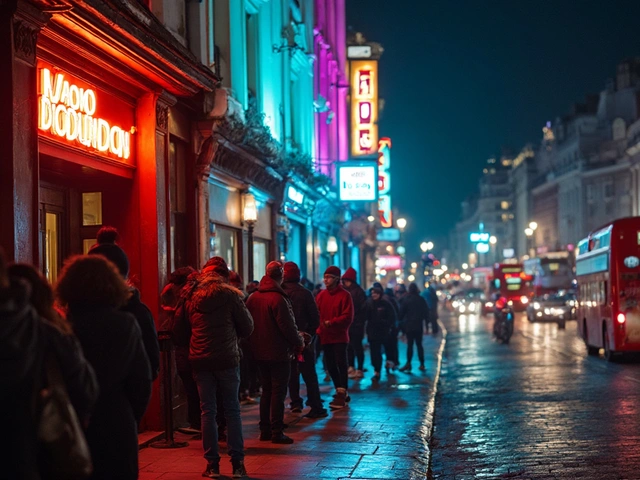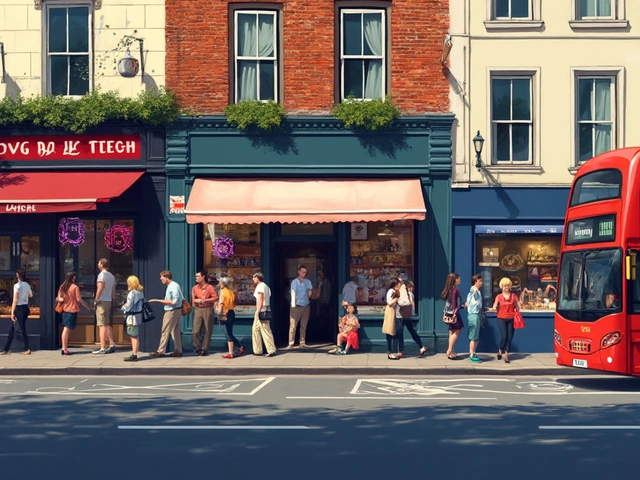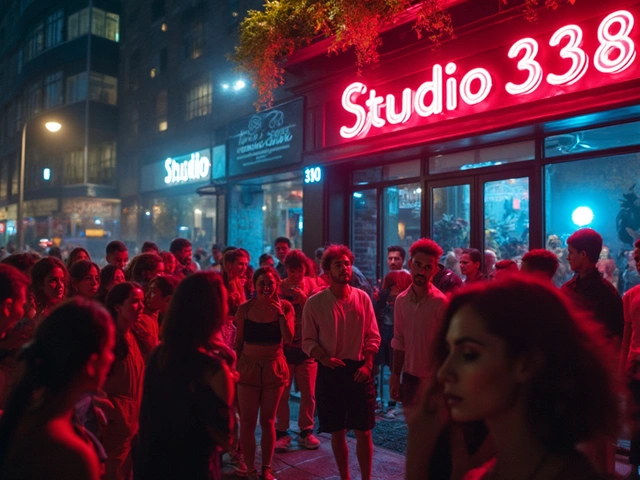In London, few sights carry the weight of history like Big Ben and the River Thames. They don’t just sit side by side-they’ve shaped each other for nearly 200 years. Walk along the South Bank on a crisp autumn morning, and you’ll see it: the clock tower’s silhouette cutting through the mist, the river glinting below, barges drifting past, and the echo of church bells ringing out over Tower Bridge. This isn’t just a postcard view. It’s the heartbeat of London.
The Clock That Kept Time for a City
Big Ben isn’t the tower-it’s the bell. The 13.7-ton bell inside the Elizabeth Tower, named after Queen Elizabeth II in 2012, first rang out in 1859. It’s been ticking through wars, royal coronations, and Brexit debates. Every hour, its chime travels farther than you think. Locals in Southwark, Camden, even as far as Greenwich, can still hear it on quiet nights. The mechanism? Still hand-wound by a team of skilled clockmakers from the Houses of Parliament. No digital updates. No automatic adjustments. Just gears, pendulums, and a few old pennies placed on the pendulum to fine-tune the time.
During World War II, the tower was hit by bombs. The clock face lost its glass, but the bell kept ringing. Londoners say the sound gave them courage. Today, you can still hear it during Remembrance Sunday, when the nation falls silent and the chimes mark the two-minute pause. That’s not tourism. That’s tradition.
The River That Moved a Metropolis
The River Thames isn’t just water. It’s London’s original highway. Before the Tube, before the bus routes, before the Overground, the Thames carried grain, coal, wool, and people. In the 1800s, wharves lined its banks from Tower Bridge to Westminster. You’d find dockworkers unloading tea from India, spices from the Caribbean, and timber from Canada. The smell of tar, salt, and wet wool clung to the air.
Today, the river still moves. Thames Clippers run every 20 minutes from Westminster Pier to Canary Wharf. You can hop on for £5.50 and ride past the London Eye, the Tate Modern, and the Shard-all from the water. Locals do it to avoid the Tube crush. Tourists do it because it’s the only way to truly see how the city unfolds. And on summer evenings, you’ll spot kayakers near Vauxhall, paddleboarders near Battersea, and couples picnicking on the Embankment with a bottle of English sparkling wine and a packet of crisps.
How They Shaped Each Other
Big Ben wasn’t built in a vacuum. It was part of the new Palace of Westminster, constructed after the old one burned down in 1834. The architects chose the location because it faced the river-so the clock could be seen from the water. Ships arriving from the sea would spot the tower first. It was London’s signal: you’ve reached the capital.
The river, in turn, gave the tower its rhythm. Tides once lapped right up to the base of the Houses of Parliament. Floods were common. In 1928, the Thames overflowed, flooding the basement of the Commons. That’s why the Thames Barrier now stands downstream in Woolwich-a 1.5-mile-long steel wall built in 1984 to protect the city from rising waters. Without the river, Big Ben wouldn’t have been built where it was. Without the tower, the river might’ve just been another busy waterway.
Where to See It Right
If you want to feel the partnership between Big Ben and the Thames, go where the locals go. Start at Westminster Bridge at golden hour. The light hits the clock face just right, turning the stone gold. You’ll see photographers with tripods, but also pensioners feeding the pigeons, and students sketching in notebooks. Walk south to the London Eye. Turn around. There it is: the tower, the river, the red buses, the black cabs-all in one frame.
Or take the 11 bus from Trafalgar Square to Westminster. Sit by the window. As you cross the bridge, the tower appears suddenly, like it’s always been waiting. No sign. No fanfare. Just quiet presence.
For a quieter moment, head to St. Thomas’ Hospital on the south bank. The view from its garden is the same one Florence Nightingale saw in the 1850s. The bell still rings. The river still flows. Nothing’s changed.
What Most Tourists Miss
Most people line up for the Big Ben tour inside Parliament. But that’s only one way to experience it. The real magic is outside. At 11 p.m., when the crowds thin, the bell chimes echo differently-clearer, lonelier. Walk down to the riverbank near Lambeth. Sit on the stone steps. You’ll hear the bell, then the ripple of water against the embankment. A barge passes, its horn low and deep. Somewhere, a pub opens its doors. Someone laughs. The city breathes.
And in winter, when the fog rolls in from the river, Big Ben doesn’t disappear. It becomes a ghost. You hear it before you see it. The chimes cut through the mist like a memory. That’s when London feels most like itself.
Why It Still Matters
London has changed. The Shard towers over the skyline. The Crossrail tunnels under the river. New restaurants open every week in Shoreditch. But Big Ben and the Thames? They’re constants. They remind you that this city didn’t grow by accident. It grew because people chose to build beside water. Because they believed time mattered. Because they wanted something that would outlast them.
Walk along the Thames any day, and you’ll see it: schoolchildren on a field trip, a man reading a newspaper on a bench, a street musician playing ‘Rule, Britannia!’ with a ukulele. The bell rings. The river flows. And for a moment, London remembers who it is.
Can you go inside Big Ben?
Yes, but only UK residents can book tours through their Member of Parliament. The tours are limited, and access is restricted due to safety and conservation work. Most visitors admire it from the outside, which is where the real experience lies.
What’s the best time to photograph Big Ben and the Thames?
Golden hour-about an hour before sunset-is ideal. The light hits the clock face and the river at the same time, creating warm reflections. Winter evenings are especially magical when the fog rolls in and the tower glows under streetlights.
Is the River Thames safe to walk along?
Absolutely. The Thames Path is well-maintained from Putney to Tower Bridge. It’s one of London’s most popular free walks. Stick to the official paths, avoid slippery areas after rain, and be aware of tide times if you’re near the estuary. Always check local signage.
Do the bells still chime every hour?
Yes. After a major restoration from 2017 to 2021, Big Ben now chimes on the hour, and the quarter bells chime every 15 minutes. During maintenance, the sound is sometimes muted, but it’s rare. You can check the Parliament website for updates if you’re planning a visit.
Can you take a boat ride past Big Ben?
Yes. Thames Clippers and private tour boats like City Cruises depart from Westminster Pier. A 30-minute ride takes you past Big Ben, the Houses of Parliament, and Tower Bridge. It’s a great way to see the landmarks without walking. Tickets start at £15 for a single journey.
If you’re new to London, don’t rush to see everything. Sit by the river. Wait for the bell. Let the city tell you its story. You’ll hear it-not in the noise, but in the quiet between the chimes.

